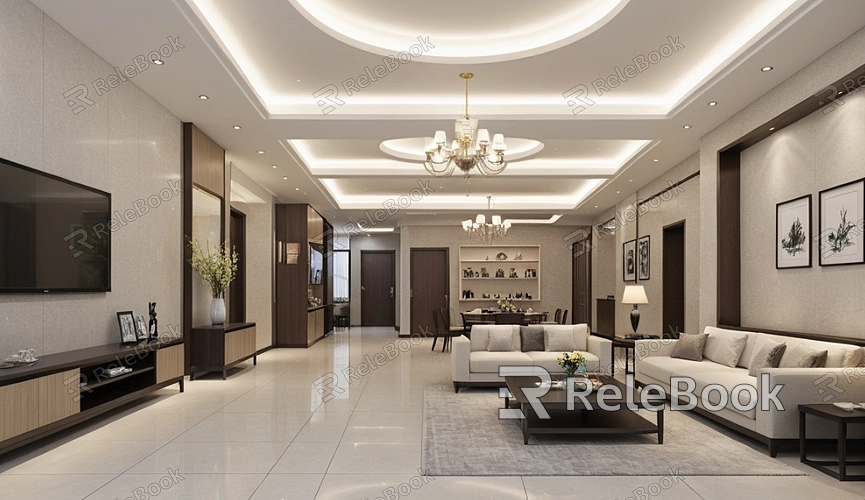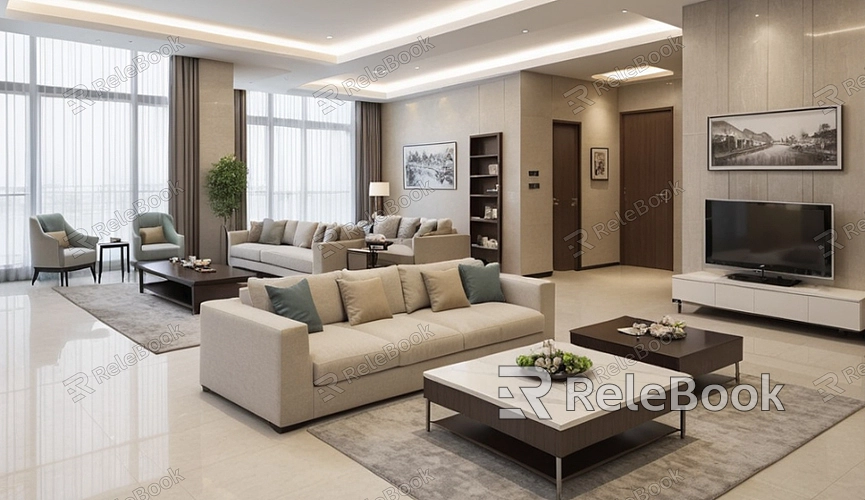How to Merge a 3D Model with a Flat Texture?

Preparing Your 3D Model
Before you begin applying textures, it's essential to have a well-prepared 3D model. The preparation stage involves several key steps:
1. Optimizing the Model
Ensure that your 3D model is optimized for texturing. This means checking the model for unnecessary geometry that might complicate the texturing process. Clean up any redundant vertices, edges, or faces, and ensure that the model is as simple as possible without losing detail. This step not only makes the texturing process easier but also improves the model's performance in real-time applications like games or simulations.
2. UV Unwrapping
UV unwrapping is a critical step in preparing your model for texturing. It involves projecting the 3D surface of the model onto a 2D plane, which allows you to apply a flat texture accurately. In most 3D software, you can find tools that assist in this process. The goal is to create a UV map that represents all the surfaces of your model without overlapping areas, as overlapping can cause texture distortion.
3. Exporting the UV Map
Once you've unwrapped the model, export the UV map as an image. This map serves as a template for creating your texture. By having the UV map as a reference, you can paint or edit your texture in an image editing software, ensuring that it aligns perfectly with the 3D model.
Creating the Flat Texture
With the UV map exported, the next step is to create or acquire the flat texture that will be applied to the model. This texture could be anything from a simple color to a complex image with detailed patterns or materials.
1. Designing the Texture
You can design the texture using graphic design software like Photoshop, GIMP, or any other image editor. Using the UV map as a guide, paint or place images on the texture in a way that matches the different parts of the 3D model. For example, if you're texturing a character model, you might place facial features on the areas of the map that correspond to the model's face.
2. Using Pre-made Textures
If you're not comfortable creating your texture, there are many resources online where you can find pre-made textures. These can be a great starting point, especially for common materials like wood, metal, or fabric. Just make sure the texture matches the UV map layout of your model.
3. Saving the Texture
After creating or editing the texture, save it in a format compatible with your 3D software, such as PNG, JPEG, or TGA. Make sure the resolution of the texture is appropriate for your project; higher resolutions offer more detail but require more processing power.

Applying the Texture to the 3D Model
Now that both your 3D model and texture are ready, it’s time to merge them.
1. Importing the Texture
In your 3D software, import the texture image you created. Most 3D applications allow you to do this by loading the texture into a material or shader, which you can then apply to the model.
2. Assigning the Material to the Model
After importing the texture, create a new material in your 3D software and assign the texture to the material's diffuse or base color channel. Then, apply this material to your 3D model. At this point, you should see the texture wrapping around the model according to the UV map you created earlier.
3. Adjusting the Texture
Sometimes, after applying the texture, you might notice that it doesn’t align perfectly or looks distorted. This can happen due to inaccuracies in the UV map or texture design. To fix this, you can tweak the UV map within the 3D software or adjust the texture in your image editor. Many 3D programs also offer tools to stretch, rotate, or move the texture on the model, allowing for minor adjustments without going back to the UV mapping stage.
Refining and Finalizing the Textured Model
Once the texture is applied, it's time to refine the look and feel of your model to ensure it meets your expectations.
1. Adding Bump and Normal Maps
To enhance the realism of your textured model, consider adding bumps or normal maps. These maps simulate surface details like bumps, wrinkles, or grooves without adding extra geometry. They work by affecting how light interacts with the model, giving the illusion of depth and texture.
2. Adjusting Lighting and Shading
The appearance of your textured model can vary significantly depending on the lighting and shading settings in your 3D scene. Experiment with different lighting setups to see how they affect the texture. You may need to adjust the material properties, such as glossiness or reflectivity, to get the desired look.
3. Rendering the Final Model
Once you’re satisfied with the texture application, render the model to see how it looks in a final image or animation. If you’re using the model in a game engine, test it in the engine to ensure it looks good in real time. Make any final tweaks as needed, then export or save your project.
FAQ
What is UV unwrapping, and why is it necessary?
UV unwrapping is the process of mapping a 3D model’s surface onto a 2D plane to apply textures. It’s necessary because it allows you to apply flat textures to complex 3D shapes without distortion.
How do I fix texture distortion on my model?
Texture distortion usually occurs due to an inaccurate UV map. You can fix it by adjusting the UV map or tweaking the texture within your 3D software to better align with the model’s surface.
What file format should I use for saving my texture?
Common formats include PNG, JPEG, and TGA. PNG is popular due to its lossless compression and support for transparency, making it a good choice for most textures.
Can I use a single texture for multiple models?
Yes, as long as the UV maps of those models align with the texture. This is common in game development, where efficiency is key, and multiple models might share the same texture atlas.
How can I make my textures look more realistic?
Use high-resolution images, add details like bumps or normal maps, and adjust the material properties (like glossiness or roughness) to simulate how light interacts with the surface.

